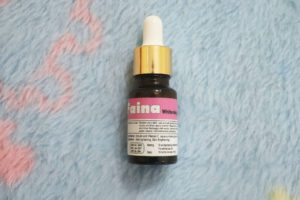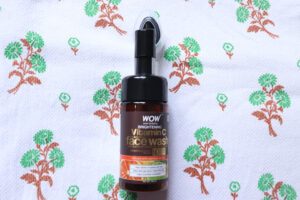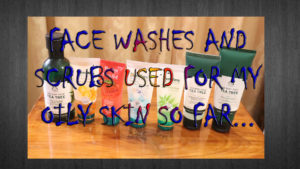What are ultraviolet rays?
Ultraviolet radiation is a segment of the broad radiation that comes from the sun towards the earth. Ultraviolet radiation is divided into UV-A, UV-B and UV-C. Visible light and infrared radiation can also damage skin.
UV-A(320-400nm) rays pass effortlessly through the ozone layer. It penetrates into the dermal layers and stimulates melanin synthesis. It also causes premature skin ageing and wrinkles. As UVA is of longer wavelength compared with UVB, it is less affected by altitude or atmospheric conditions.
UV-B(290-320nm) stimulates Vit. D. Most UVB rays are absorbed by the ozone layer. Excess UVB can cause sunburn, cataract, immune system damage etc.
UV-C(100-290nm)-these rays are the most dangerous. Fortunately, these rays are blocked by the ozone layer and cannot reach the earth.
What is SPF?
All sunscreens are labelled with a sun protection factor (SPF) number. This relates to the amount of time it takes for your skin to burn without any protection and how long it would take if you used the appropriate amount of sunscreen. An SPF 15 product filters out more than 93% of the UVB in sunlight allowing about 7% penetration. An SPF 40 filters out 97.5% of UVB rays.
What is Protection grade for UVA (PA)?
There are 3 PA grades: PA+, PA++ and PA+++ with each additional plus (+) indicating a higher protection. So, when buying a sunscreen lotion, one should note the SPF as well as the PA.
What is Noncomedogenic?
Noncomedogenic is a term applied to oils, lotions and sunscreen creams or gels that do not block pores. They are also sometimes referred to as non-occlusive. The theory behind using lotions/ creams/ gels that are noncomedogenic is that by not blocking pores they will reduce the incidence of pimples.
Tips
- Avoid direct sun exposure as much as possible during peak UV radiation hours between 10:00 a.m. and 3:00 p.m. Avoid unprotected UV exposure, seek shade.
- Wear sun protective clothing, a hat and glasses.
- Apply broad spectrum sunscreen with SPF 30 or higher with PA +++.
- Routinely check skin and report changes to your dermatologist.
- Educate yourself and others.
Check out my thoughts on this product...
La Shield Sunscreen Gel SPF 40 PA +++ Broad-Spectrum UVA/UVB
Sunscreens can be of two types providing either physical or chemical barrier to sunlight. These protect skin against sunburn, premature skin ageing, photo dermatitis. La Shield is a broad spectrum that protects against both Ultraviolet A (UVA) and Ultraviolet B (UVB) radiation with PA +++ that protects your skin from the harmful rays of the sun. It is non-comedogenic, oil free and preservative free preparation. An SPF 40 filters out 97.5% of UVB rays. PA +++ with each additional plus (+) indicating a higher protection.








Specification
- Broad spectrum UVA / UVB: protects against both Ultraviolet A (UVA) and Ultraviolet B (UVB) radiation.
- SPF 40 blocks 97.5% of UVB rays
- PA +++: offers good UVA protection
- Oil-free: does not leave greasy feeling on skin
- Noncomedogenic: does not tend to clog pores
- Non-Irritant: does not irritate skin
- Water Resistant: designed to not to be easily affected by water or to not allow water to pass through easily
- Preservative free: no added preservative so lesser chances of allergy
- Dermatologically tested
- Alcohol and dye free
- Without colour additives
- Made in India
Price
₹ 730
Quantity
60 g
Shelf Life
2 Years
Key Ingredients
Octinoxate, Diethylamino Hydroxybenzoyl Hexyl Benzoate, Bis-Ethylhexyloxyphenol Methoxyphenyl Triazine, Titanium Dioxide, Diethylhexyl Butamido Triazone.
Ingredients
Cyclomethicone (and) Dimethicone Crosspolymer, Octinoxate, C12-C15 Alkyl Benzoate, Diethylamino Hydroxybenzoyl Hexyl Benzoate, Bis-Ethylhexyloxyphenol Methoxyphenyl Triazine, Titanium Dioxide (and) Dimethicone (and) Silica, Diethylhexyl Butamido Triazone, Caprylyl Methicone (and) PEG-12 Dimethicone (and) PPG-20 Crosspolymer and Fragrance
Check out bottle image for clarification
How To Use La Shield
- La Shield Sunscreen Gel has UVA & UVB filters to provide broad spectrum protection.
- It also helps to improve skin hydration.
- Use enough sunscreen generously to coat all skin that will not be covered by clothing.
- Apply sunscreen liberally atleast 20-30 mins before going out in the sun.
- Re-apply sunscreen after every 2-3 hours or after swimming or sweating.
When To Use La Shield
- Every day, sun emits harmful ultraviolet (UV) rays year round.
- Even on cloudy days, harmful U rays can penetrate your skin.
- On a cloudy day, up to 80% of the sun’s UV rays can pass through the clouds.
- Snow and sand increase the need for sunscreen.
- Snow reflects 80% of the sun’s rays and sand reflects 25% of the sun’s rays.
Precautions to be taken while using La Shield
- Keep out od reach of children.
- For external use only. Do not swallow.
- Avoid contact with eyes. Wash eyes thoroughly with water in case of contact with eyes.
- La Shield s in an anhydrous base product, if not applied properly, it will stain clothes.
My Experience
The sunscreen is a light yellow coloured product that comes in a white tube with gold screw-in cap. The tube is very convenient to carry around. It is leak proof & easy to use. The texture is very smooth to work with; it spreads easily. It leaves my skin matte and feels light on the skin. It truely makes my skin hydrated, smooth and soft even without any extra moisturiser. The fragrance is gentle, soothing and refreshing aroma. I love this product for my oily skin. Its travel friendly. It is a little expensive but worth it. It does mention complete ingredients. Undoubtedly this is one of the best sunscreens for oily-acne prone skin. Also I never forget to reapply the sunscreen. I used to apply morning and afternoon.




